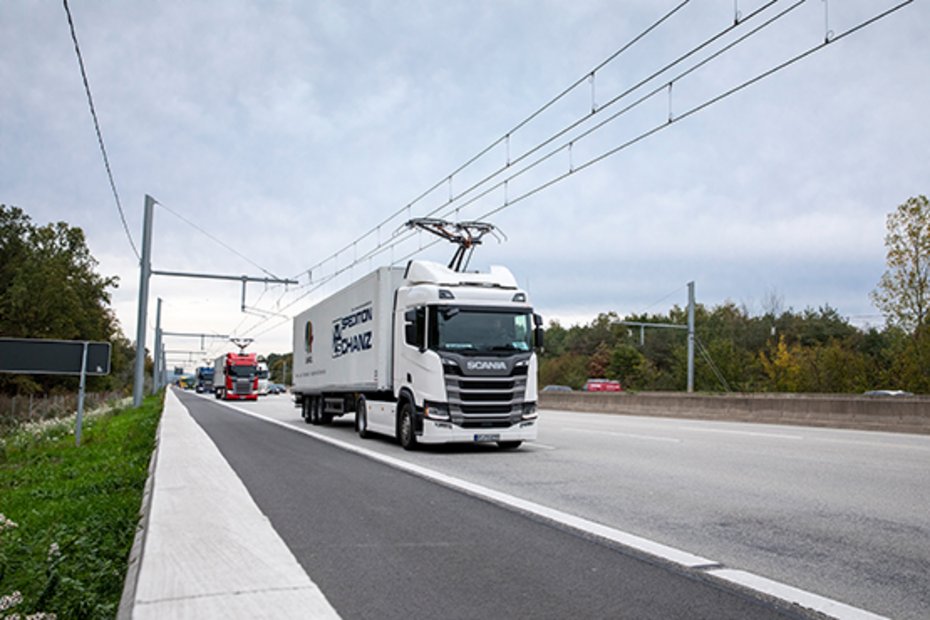
EnergyRoads
EnergyRoads - the path to a climate-neutral future
While overhead line systems are currently in the test phase in some neighboring European countries, the focus in Austria is currently on acquiring basic knowledge regarding the feasibility of implementation and the expected effects.
The aim of the EnergyRoads project was to create a neutral basis that can help with the fundamental decision for or against this technology. To this end, the infrastructural, energy-related, vehicle-related, economic and ecological conditions on the Austrian highway and expressway network were examined. The aim was to find an answer to the question of whether and how an Electric Road System (ERS) can be implemented in Austria.
EnergyRoads prepares the basis for a quick, well-founded and consistent fundamental decision with a neutral perspective. The analyses are divided into four subject areas:
1. Feasibility
Is it possible in Austria to implement an overhead line system in such a way that nationwide accessibility is ensured?
2. Meaningfulness
Does a catenary system have advantages over other decarbonization strategies? In particular, compatibility with the future energy system and economic and ecological effects were examined.
3. Acceptance
Will a catenary system be accepted and used by relevant stakeholders, especially logistics companies?
4. Implementation
How can a system be designed and operated to maximize benefits, avoid disadvantages, and ensure the safe, smooth operation of road infrastructure? To this end, financing and operator models and solutions for specific challenges were developed.
Relevant questions were, for example:
On which routes can an appropriate charging infrastructure be set up?
Can such a system ensure nationwide accessibility?
Is the resulting energy demand compatible with future electricity generation?
What requirements will be placed on the electrical output?
What economic and business effects are to be expected?
EnergyRoads combined three approaches:
- A model-based approach based on a newly developed traffic model enabled quantitative statements.
- Internal consortium expertise in the fields of infrastructure, ecology and economics enabled comprehensive answers to technical challenges and operator models, among other things.
- A broad stakeholder participation approach provided a basis for discussion, supplemented specialist knowledge and covered the area of user acceptance.
In addition, three working groups were set up on the topics of energy, infrastructure and vehicles/logistics. In particular, a transfer of knowledge with operators and scientific supervisors of the international test tracks was ensured.
Presentation of the results
The final event for the EnergyRoads project took place at the ASFiNAG site in Vienna on September 21, 2022. The project team was able to present and discuss their results in front of national and international experts
The presentations of the two stakeholder workshops are available below in the "Downloads" section. If you are interested in the presentations from the final event, please contact us at christoph.link@energyagency.at
Source: Siemens Mobility GmbH

Downloads (only german)
Project data
| Client | Das Projekt wird aus Mitteln des Klima- und Energiefonds gefördert und im Rahmen des Programms „Zero Emission Mobility“ durchgeführt. |
| Project management | Christoph Link |
| Project team |
Michael Rohrer Victoria Schopf |
| Projectpartner |
IKK: Michael Schwarz, Bernhard Lackner Trafility: Florian Koppelhuber, Eva Medicus, Elisabeth Scherounigg BVe: Helmut-Klaus Schimany |
| Projekt duration | Mark 2021 to October 2022 |
Contact person
![[Translate to German:] Mitarbeiterfoto von Christoph Link, Senior Expert Mobility & Spatial Planning](/fileadmin/_processed_/8/3/csm_christoph_link_1_438f985fc4.png)